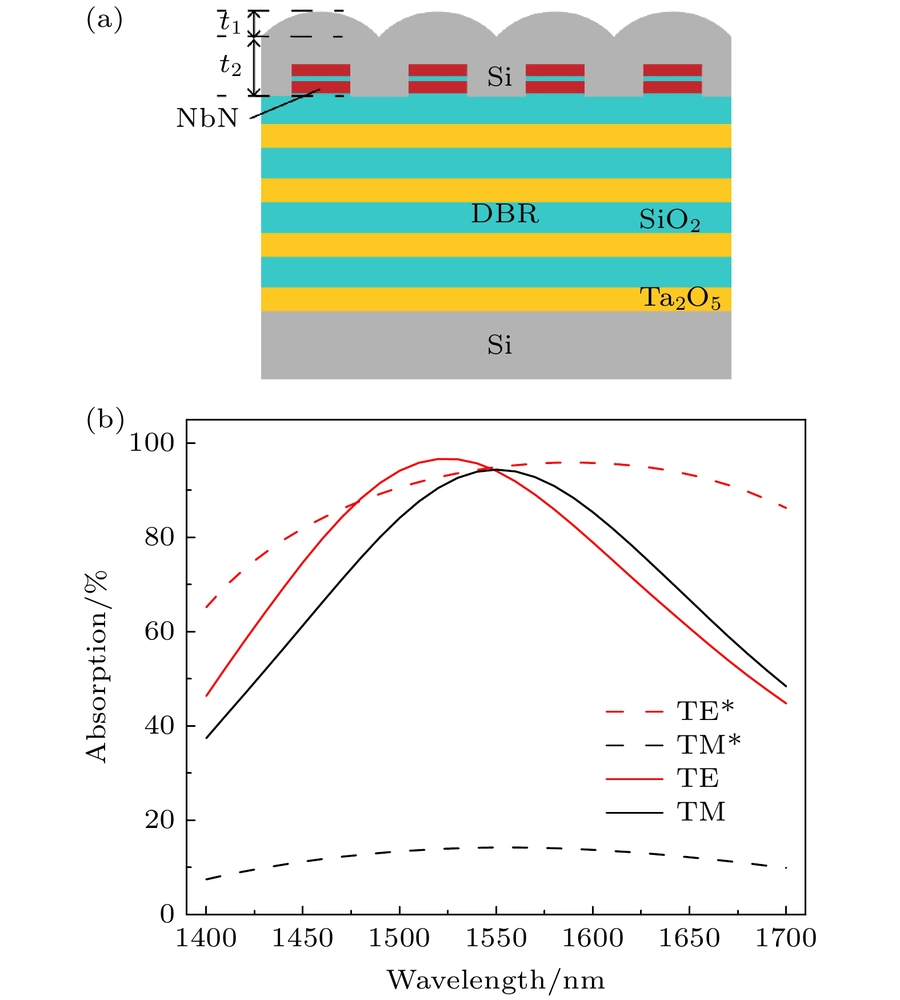High-efficiency polarization-insensitive superconducting nanowire single photon detector

Superconducting nanowire single photon detector (SNSPD) has been widely used in many fields such as quantum communication due to its extremely high detection efficiency, low dark count rate, high count rate, and low timing jitter. Compared with conventional single-photon detectors with planar structure, SNSPD is typically made a periodical meandering structure consisting of parallel straight nanowires. However, owing to its unique linear structure, the detection efficiency of SNSPD is dependent on the polarization state of incident light, thus limiting SNSPD's applications in unconventional fiber links or other incoherent light detection. In this paper, a polarization-insensitive SNSPD with high detection efficiency is proposed based on the traditional meandering nanowire structure. A thin silicon film with a high refractive index is introduced as a cladding layer of nanowires to reduce the dielectric mismatch between the nanowire and its surroundings, thereby improving the optical absorption efficiency of nanowires to the transverse-magnetic (TM) polarized incident light. The cladding layer is designed as a sinusoidal-shaped grating structure to minimize the difference in optical absorption efficiency between the transverse electric (TE) polarized incident light and the TM polarized incident light in a wide wavelength range. In addition, the twin-layer nanowire structure and the dielectric mirror are used to improve the optical absorption efficiency of the device. Our simulation results show that with the optimal parameters, the optical absorption efficiency of nanowires to both of the TE polarized incident light and TM polarized incident light has a maximum of over 90% at 1550 nm, and the corresponding polarization extinction ratio is less than 1.22. The fabricated device possesses a maximum detection efficiency of 87% at 1605 nm and a polarization extinction ratio of 1.06. The measured detection efficiency exceeds 50% with a polarization extinction ratio less than 1.2 in a wavelength range from 1505 nm to 1630 nm. This work provides a reference for high-efficiency polarization-insensitive SNSPD in the future.
Acta Physica Sinica. 2021 70(18): 188501. Published 2021-09-20
Publisher URL: http://wulixb.iphy.ac.cn/en/article/doi/10.7498/aps.70.20210486
Open URL: https://doi.org/10.7498/aps.70.20210486
DOI: 10.7498/aps.70.20210486
Keeping up-to-date with research can feel impossible, with papers being published faster than you'll ever be able to read them. That's where Researcher comes in: we're simplifying discovery and making important discussions happen. With over 19,000 sources, including peer-reviewed journals, preprints, blogs, universities, podcasts and Live events across 10 research areas, you'll never miss what's important to you. It's like social media, but better. Oh, and we should mention - it's free.
Researcher displays publicly available abstracts and doesn’t host any full article content. If the content is open access, we will direct clicks from the abstracts to the publisher website and display the PDF copy on our platform. Clicks to view the full text will be directed to the publisher website, where only users with subscriptions or access through their institution are able to view the full article.


